
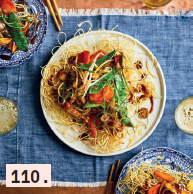
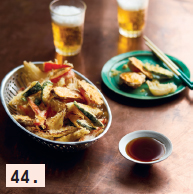
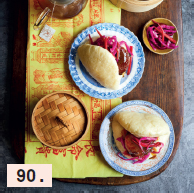 As a third-generation Cantonese chef, having quite literally grown up in the frantically beating heart of the Chinese restaurants and takeaways owned and run by my parents and my grandfather before them, writing my previous book The Chinese Takeaway Cookbook felt like a deliciously therapeutic trip down memory lane, reliving my time in the kitchens and recalling the original recipes of the most-ordered Chinese takeaway dishes to share with you. The recipes have been so popular with readers that I regularly receive pictures of the delicious meals that theyve prepared for friends and family. In the world of food, nothing makes me happier than to see inspired home cooks trying new recipes and feeling the satisfaction of having created something amazing. The Chinese Takeaway Cookbook included meat, fish and vegetarian dishes, but when I was asked to write a vegetarian/vegan Chinese takeaway cookbook, I was truly excited to explore more of the flavourful vegetable options. Having taken some time out to investigate what is currently available in the marketplace and expecting to find vibrant veggies in luscious marinades, I was a little confused by the vast array of overseasoned and processed products that were simply pretending to be meat. And so I began to write; taking the freshest of produce, the five flavours of Chinese cookery salty, spicy, sour, sweet and bitter and using traditional cooking techniques that, instead of masking the flavours, elevated them to new heights in combination with classic Chinese and Pan-Asian ingredients and seasonings inspired by my childhood and travels.
As a third-generation Cantonese chef, having quite literally grown up in the frantically beating heart of the Chinese restaurants and takeaways owned and run by my parents and my grandfather before them, writing my previous book The Chinese Takeaway Cookbook felt like a deliciously therapeutic trip down memory lane, reliving my time in the kitchens and recalling the original recipes of the most-ordered Chinese takeaway dishes to share with you. The recipes have been so popular with readers that I regularly receive pictures of the delicious meals that theyve prepared for friends and family. In the world of food, nothing makes me happier than to see inspired home cooks trying new recipes and feeling the satisfaction of having created something amazing. The Chinese Takeaway Cookbook included meat, fish and vegetarian dishes, but when I was asked to write a vegetarian/vegan Chinese takeaway cookbook, I was truly excited to explore more of the flavourful vegetable options. Having taken some time out to investigate what is currently available in the marketplace and expecting to find vibrant veggies in luscious marinades, I was a little confused by the vast array of overseasoned and processed products that were simply pretending to be meat. And so I began to write; taking the freshest of produce, the five flavours of Chinese cookery salty, spicy, sour, sweet and bitter and using traditional cooking techniques that, instead of masking the flavours, elevated them to new heights in combination with classic Chinese and Pan-Asian ingredients and seasonings inspired by my childhood and travels.
One must learn to blend the flavours harmoniously to truly master Chinese cookery. CHINESE PROVERB Whenever Im in Hong Kong I head to the many temples and monasteries, not only for the complete tranquillity and beauty but also for their amazing vegetarian food. Ive found nowhere else that feeds the mind, body and soul in such a peaceful way. Vegetarianism is one of the most important contributions that Buddhist monks have made to Chinese cuisine. Over the centuries they have perfected the preparation and method of these dishes and, as most abstain from all byproducts of meat, fish and eggs, many of these recipes can easily be modified to become completely vegan. From around the thirteenth century the Buddhist community has opened vegetarian restaurants in cities across China and has inspired the creation of a distinct cuisine complete with imitation meats.
Whenever Im in Hong Kong I head to the many temples and monasteries, not only for the complete tranquillity and beauty but also for their amazing vegetarian food. Ive found nowhere else that feeds the mind, body and soul in such a peaceful way. Vegetarianism is one of the most important contributions that Buddhist monks have made to Chinese cuisine. Over the centuries they have perfected the preparation and method of these dishes and, as most abstain from all byproducts of meat, fish and eggs, many of these recipes can easily be modified to become completely vegan. From around the thirteenth century the Buddhist community has opened vegetarian restaurants in cities across China and has inspired the creation of a distinct cuisine complete with imitation meats.
Traditional cooking methods include the quick stir-fry in a wok over a very high heat. As soon as the ingredients hit the red-hot surface, theyre sealed, locking in all the goodness, and after a mere few minutes more, theyre cooked. Preparing such beautiful ingredients can be very therapeutic; take your time to ensure each vegetable is cut to the exact same size, and immerse yourself in the simple pleasure of the preparation the cooking can be quite frantic as the wok roars, spits and smokes over the lick of the flames. With a little bit of time, care and preparation, you can extract so much flavour from the simplest of ingredients and no more so than from the humble vegetable. Whether youre a devout vegan or a carnivore who enjoys a graze on the green side, vegetables need no longer be a mere side dish, but should be celebrated in all their glory, whether that be a crispy cauliflower steak dressed in Tonkatsu sauce or a sumptuous seaweed and tofu soup; the world is your cucumber! Kwoklyn x www.kwoklynwan.com Sesame oil Add the tiniest amount of this oil, extracted from the humble sesame seed, to marinades or at the very end of cooking to quite literally transform your dish from yum to OMG nom, nom, nom. Use sparingly as its packed with flavour and can overpower if used too liberally.
Where possible buy pure sesame oil and not the blended variety. Light soy sauce The light variety is used to season your dish or as a dip; its saltier than its darker sibling but is still packed with that umami flavour that we all love. Its made using fermented soya bean paste. Dark soy sauce Sweeter and thicker than its lighter sibling and packed with umami to bring a silky smoothness to our taste buds as well as to colour dishes and inject flavour. Made using fermented soya beans, molasses and sweetener agents, it is aged for longer than the lighter variety. Mushroom stir-fry sauce Used widely to inject some serious flavour into a dish.
Made with dried Chinese mushrooms, seaweed and soy sauce, its packed with that unctuous umami taste that is very often found in . Chinese five spice Made by combining star anise, Sichuan peppercorns, cinnamon, fennel seeds and cloves, the ingredients are ground to a fine powder to create this well-loved and frequently used seasoning. Used to flavour many dishes but especially those that originate from Cantonese cuisine. Sichuan pepper Sichuan peppers unique flavour is not spicy or pungent but lemony; its unique characteristic is the tingly numbing sensation that it produces in the mouth as you eat. It is very often used in combination with fresh chillies and star anise in Sichuan cuisine. Rice vinegar Clear rice vinegar is made by fermenting rice, firstly into alcohol and then into acid; compared to white distilled vinegar it is less acidic and sweeter in flavour.
Black vinegar is made with glutinous rice and aged longer to produce a woody, smoky malt flavour and is widely used in southern Chinese cuisine. Rice wine Made from the fermentation of rice starch that has been converted into sugars and is used widely in Asian cooking. Typically, it has an alcohol content of 1825 per cent.  THE HOLY TRINITY There are three key ingredients you need when cooking Cantonese food: garlic, ginger and spring onions. They are sometimes used all together and sometimes they appear on their own but youll always find at least one when cooking traditional Cantonese cuisine. Garlic cloves Garlic cloves pack a serious amount of flavour and are closely related to onions, chives and leeks.
THE HOLY TRINITY There are three key ingredients you need when cooking Cantonese food: garlic, ginger and spring onions. They are sometimes used all together and sometimes they appear on their own but youll always find at least one when cooking traditional Cantonese cuisine. Garlic cloves Garlic cloves pack a serious amount of flavour and are closely related to onions, chives and leeks.
Originating in central Asia, garlic is widely used across the world as a seasoning for its pungent flavour. Ginger root Ginger root has been used in China for millennia as a medicine; closely related to turmeric and cardamom it originates from the islands of South East Asia. Its flavour is hot and fragrant and can be prepared for consumption in many ways, including pickling, steeping in tea, candied or used as an ingredient for cooking. Spring onions Spring onions have a milder taste than their related cousins, onions, chives, shallots and garlic. The entire plant is edible, raw or cooked, and the hollow leaves are used as a vegetable in many dishes around the world. Tip for using these three Cantonese flavours: if you want a subtle hint of flavour, chop the ingredients into large pieces; as they cook they will slowly infuse the dish with their aromatic yumminess.
For a full-bodied kapow hit of flavour, finely chop the ingredients so that every mouthful holds an aromatic explosion. Wok The round-bottomed wok was designed to sit over a hollow, above a roaring-hot fire. Made from thinly beaten carbon steel, the entire surface of the wok reaches a high temperature, making it perfect for the style of cooking known as stir-frying. Over time the wok builds up layers of oil; this is known as seasoning. The seasoning of a wok makes the carbon-steel surface nonstick and food literally glides across the surface as it cooks. You may find that when you buy a new wok, food will stick to it, but over time and with the layer of seasoning the wok will create a charred flavour and aroma.
Next page
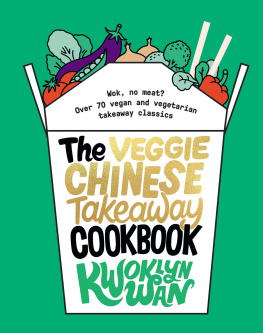
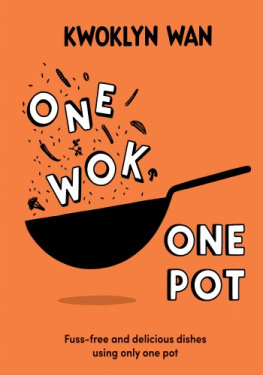
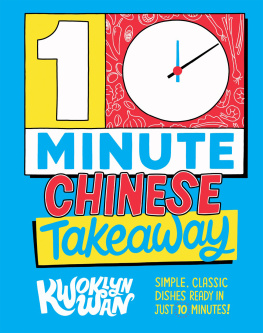

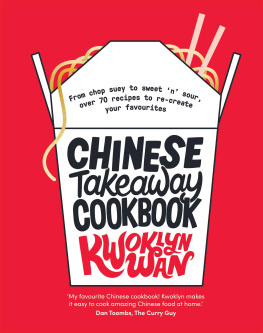
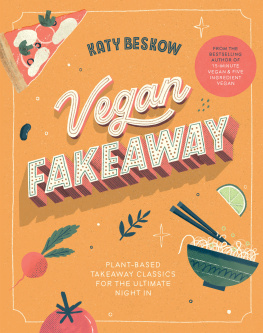

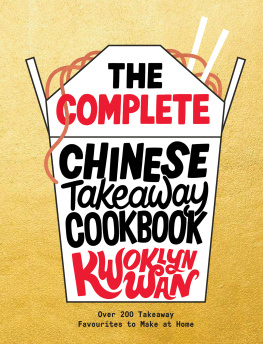
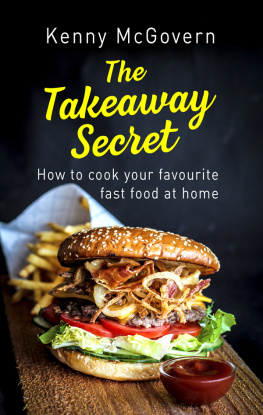

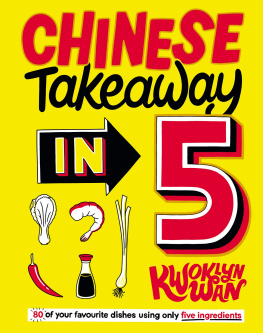
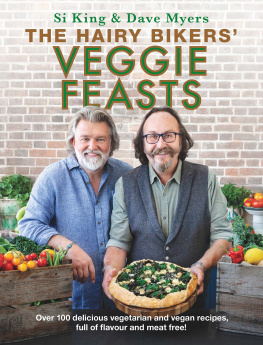

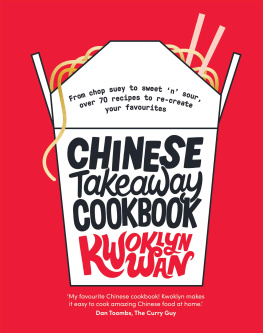



 As a third-generation Cantonese chef, having quite literally grown up in the frantically beating heart of the Chinese restaurants and takeaways owned and run by my parents and my grandfather before them, writing my previous book The Chinese Takeaway Cookbook felt like a deliciously therapeutic trip down memory lane, reliving my time in the kitchens and recalling the original recipes of the most-ordered Chinese takeaway dishes to share with you. The recipes have been so popular with readers that I regularly receive pictures of the delicious meals that theyve prepared for friends and family. In the world of food, nothing makes me happier than to see inspired home cooks trying new recipes and feeling the satisfaction of having created something amazing. The Chinese Takeaway Cookbook included meat, fish and vegetarian dishes, but when I was asked to write a vegetarian/vegan Chinese takeaway cookbook, I was truly excited to explore more of the flavourful vegetable options. Having taken some time out to investigate what is currently available in the marketplace and expecting to find vibrant veggies in luscious marinades, I was a little confused by the vast array of overseasoned and processed products that were simply pretending to be meat. And so I began to write; taking the freshest of produce, the five flavours of Chinese cookery salty, spicy, sour, sweet and bitter and using traditional cooking techniques that, instead of masking the flavours, elevated them to new heights in combination with classic Chinese and Pan-Asian ingredients and seasonings inspired by my childhood and travels.
As a third-generation Cantonese chef, having quite literally grown up in the frantically beating heart of the Chinese restaurants and takeaways owned and run by my parents and my grandfather before them, writing my previous book The Chinese Takeaway Cookbook felt like a deliciously therapeutic trip down memory lane, reliving my time in the kitchens and recalling the original recipes of the most-ordered Chinese takeaway dishes to share with you. The recipes have been so popular with readers that I regularly receive pictures of the delicious meals that theyve prepared for friends and family. In the world of food, nothing makes me happier than to see inspired home cooks trying new recipes and feeling the satisfaction of having created something amazing. The Chinese Takeaway Cookbook included meat, fish and vegetarian dishes, but when I was asked to write a vegetarian/vegan Chinese takeaway cookbook, I was truly excited to explore more of the flavourful vegetable options. Having taken some time out to investigate what is currently available in the marketplace and expecting to find vibrant veggies in luscious marinades, I was a little confused by the vast array of overseasoned and processed products that were simply pretending to be meat. And so I began to write; taking the freshest of produce, the five flavours of Chinese cookery salty, spicy, sour, sweet and bitter and using traditional cooking techniques that, instead of masking the flavours, elevated them to new heights in combination with classic Chinese and Pan-Asian ingredients and seasonings inspired by my childhood and travels. Whenever Im in Hong Kong I head to the many temples and monasteries, not only for the complete tranquillity and beauty but also for their amazing vegetarian food. Ive found nowhere else that feeds the mind, body and soul in such a peaceful way. Vegetarianism is one of the most important contributions that Buddhist monks have made to Chinese cuisine. Over the centuries they have perfected the preparation and method of these dishes and, as most abstain from all byproducts of meat, fish and eggs, many of these recipes can easily be modified to become completely vegan. From around the thirteenth century the Buddhist community has opened vegetarian restaurants in cities across China and has inspired the creation of a distinct cuisine complete with imitation meats.
Whenever Im in Hong Kong I head to the many temples and monasteries, not only for the complete tranquillity and beauty but also for their amazing vegetarian food. Ive found nowhere else that feeds the mind, body and soul in such a peaceful way. Vegetarianism is one of the most important contributions that Buddhist monks have made to Chinese cuisine. Over the centuries they have perfected the preparation and method of these dishes and, as most abstain from all byproducts of meat, fish and eggs, many of these recipes can easily be modified to become completely vegan. From around the thirteenth century the Buddhist community has opened vegetarian restaurants in cities across China and has inspired the creation of a distinct cuisine complete with imitation meats. THE HOLY TRINITY There are three key ingredients you need when cooking Cantonese food: garlic, ginger and spring onions. They are sometimes used all together and sometimes they appear on their own but youll always find at least one when cooking traditional Cantonese cuisine. Garlic cloves Garlic cloves pack a serious amount of flavour and are closely related to onions, chives and leeks.
THE HOLY TRINITY There are three key ingredients you need when cooking Cantonese food: garlic, ginger and spring onions. They are sometimes used all together and sometimes they appear on their own but youll always find at least one when cooking traditional Cantonese cuisine. Garlic cloves Garlic cloves pack a serious amount of flavour and are closely related to onions, chives and leeks.